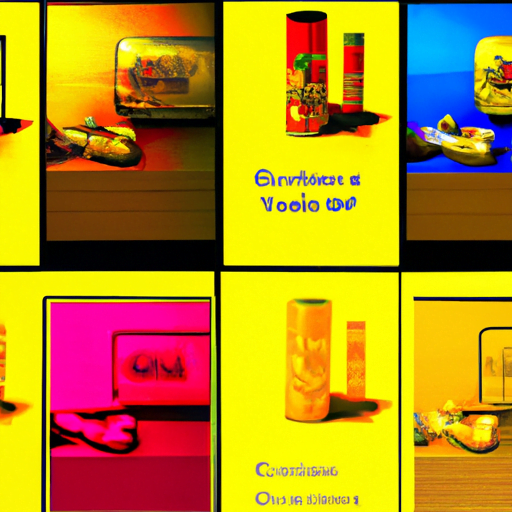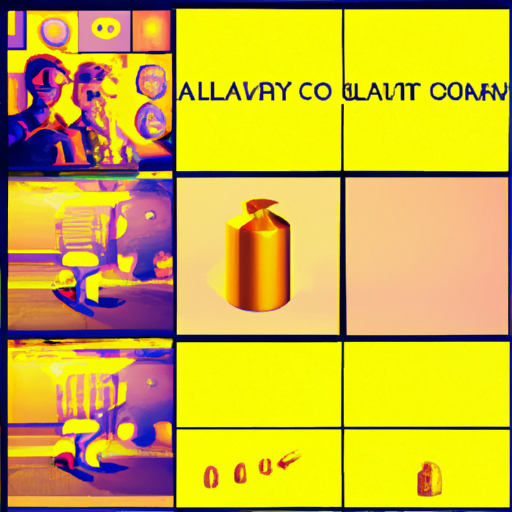
-
Table of Contents
- Designing Custom Artwork for Video Games and Animation
- The Importance of Custom Artwork in Video Games and Animation
- The Process of Designing Custom Artwork
- 1. Conceptualization
- Case Studies: Custom Artwork in Video Games and Animation
- Case Study 1: The Legend of Zelda: Breath of the Wild
- Case Study 2: Pixar Animation Studios
- The Impact of Custom Artwork on the Overall Experience
- Summary
Designing Custom Artwork for Video Games and Animation

Artwork plays a crucial role in the success of video games and animation. It sets the tone, creates immersive worlds, and brings characters to life. Designing custom artwork for these mediums requires a unique set of skills and considerations. In this article, we will explore the process of creating custom artwork for video games and animation, the importance of art in these industries, and the impact it has on the overall experience.
The Importance of Custom Artwork in Video Games and Animation
Custom artwork is the backbone of video games and animation. It is what captures the attention of players and viewers, drawing them into the virtual worlds and stories being told. Without visually appealing and well-designed artwork, these mediums would lose their charm and fail to engage the audience.
1. Immersion: Custom artwork helps create immersive experiences by building visually stunning and believable worlds. Whether it’s a fantasy realm or a futuristic cityscape, the artwork sets the stage for players and viewers to lose themselves in the narrative.
2. Storytelling: Artwork is a powerful storytelling tool. It conveys emotions, communicates information, and establishes the atmosphere of a scene. From character designs to environmental art, every element contributes to the narrative and enhances the storytelling process.
3. Branding: Custom artwork plays a vital role in establishing and maintaining a brand’s identity. Iconic characters and memorable visuals become synonymous with the game or animation, creating a lasting impression on the audience. Think of Mario from Nintendo or Mickey Mouse from Disney.
The Process of Designing Custom Artwork
Designing custom artwork for video games and animation is a multi-step process that involves collaboration between artists, designers, and developers. Let’s explore the key stages of this process:
1. Conceptualization
The first step in designing custom artwork is conceptualization. This stage involves brainstorming ideas, creating sketches, and developing a visual direction for the project. Artists work closely with the creative team to understand the vision and goals of the game or animation.
2. Style Exploration
Once the concept is established, artists explore different art styles that align with the project’s requirements. This stage may involve creating mood boards, researching existing artwork, and experimenting with various techniques. The goal is to find a style that enhances the narrative and resonates with the target audience.
3. Character and Environment Design
Character and environment design are crucial aspects of custom artwork. Artists create detailed illustrations and 3D models that bring the characters and environments to life. This stage requires a deep understanding of anatomy, perspective, and composition to ensure the designs are visually appealing and functional within the game or animation.
4. Iteration and Feedback
Throughout the design process, artists collaborate with the creative team and receive feedback on their work. This iterative approach allows for refinement and improvement of the artwork. Feedback from designers, developers, and even focus groups helps ensure that the artwork aligns with the project’s vision and meets the expectations of the audience.
5. Integration
Once the artwork is finalized, it is integrated into the game or animation. This stage involves technical considerations such as optimizing assets for performance, implementing animations, and ensuring seamless integration with the overall project. Collaboration between artists and developers is crucial to ensure the artwork is faithfully represented in the final product.
Case Studies: Custom Artwork in Video Games and Animation
Let’s take a look at two case studies that highlight the impact of custom artwork in video games and animation:
Case Study 1: The Legend of Zelda: Breath of the Wild
The Legend of Zelda: Breath of the Wild is a critically acclaimed video game known for its stunning artwork. The game’s custom artwork played a significant role in creating a vast and immersive open-world experience. The attention to detail in the character designs, environments, and landscapes contributed to the game’s success and garnered praise from players and critics alike.
Case Study 2: Pixar Animation Studios
Pixar Animation Studios is renowned for its visually stunning and emotionally engaging animated films. The studio’s custom artwork sets the standard for quality in the animation industry. From the vibrant characters in Toy Story to the breathtaking landscapes in Finding Nemo, Pixar’s artwork elevates the storytelling and creates memorable experiences for viewers of all ages.
The Impact of Custom Artwork on the Overall Experience
Custom artwork has a profound impact on the overall experience of video games and animation. It enhances immersion, strengthens storytelling, and leaves a lasting impression on the audience. Here are some key ways in which custom artwork influences the experience:
1. Emotional Connection: Well-designed artwork evokes emotions and creates a connection between the audience and the characters or world being portrayed. This emotional engagement enhances the overall experience and makes it more memorable.
2. Visual Appeal: Custom artwork adds visual appeal to video games and animation, making them visually captivating and enjoyable to look at. The aesthetics of the artwork contribute to the overall enjoyment of the experience.
3. Brand Recognition: Iconic artwork becomes synonymous with a brand, making it instantly recognizable. This recognition helps build a loyal fan base and contributes to the success of future projects.
Summary
Custom artwork is a vital component of video games and animation. It creates immersive experiences, enhances storytelling, and establishes brand identities. The process of designing custom artwork involves conceptualization, style exploration, character and environment design, iteration and feedback, and integration. Case studies such as The Legend of Zelda: Breath of the Wild and Pixar Animation Studios highlight the impact of custom artwork in these industries. Custom artwork influences the overall experience by creating emotional connections, providing visual appeal, and contributing to brand recognition. As video games and animation continue to evolve, the importance of custom artwork will only grow, shaping the future of these mediums.
